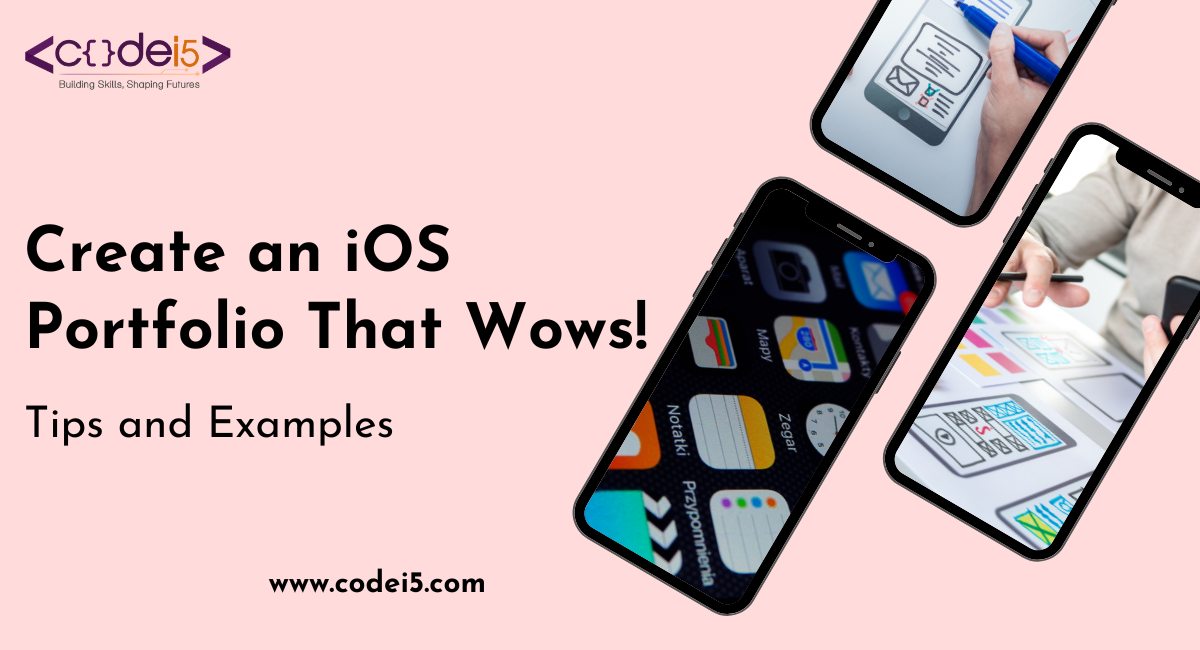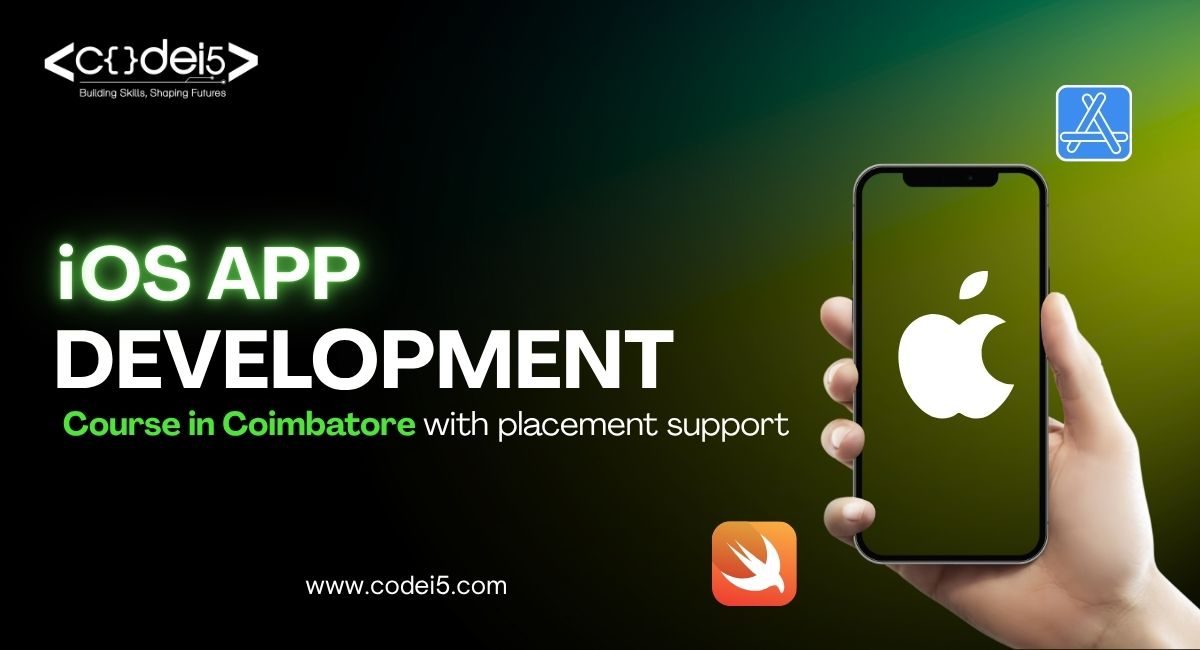
You’ve spent months working hard on a groundbreaking iOS app. You’ve poured countless hours into coding, perfecting every detail, and now you have something special—a digital masterpiece that could change users’ lives. But how do you turn this passion project into something people want?
The answer is in your Portfolio. Your portfolio is more than just a list of your skills—it’s your stage, your showcase, and the way you tell the story of your app idea. Let’s create a portfolio that not only shows off what you can do but also shares the compelling story behind your app.
Understanding the Purpose of Your Portfolio
Who are you trying to impress?
Your iOS portfolio should have a clear audience in mind. Are you trying to catch the eye of potential employers who are looking for skilled developers? Or are you hoping to attract clients who need a high-quality app? Knowing your audience will help you shape your portfolio to meet their expectations.
What’s your story?
Your portfolio is your chance to show off your skills, projects, and experiences. Think of it as a visual resume that highlights your ability to create innovative and user-friendly iOS apps. Make sure to include a mix of completed projects, prototypes, and code samples to show your technical abilities.
Where do you want to go?
Your portfolio should reflect your career goals. Do you want to become an app entrepreneur, a UI/UX designer, or a backend developer? Align your portfolio with your career path by showcasing relevant projects and skills. This will help you attract opportunities that match what you want to achieve.
Building a Strong Foundation
1. Choosing the Right PlatformYour portfolio needs a home where your work can really shine. Popular platforms like Behance and Dribbble are great for creative professionals, while building your own website gives you full control. When picking a platform, think about customization options, cost, and who the platform is designed for. Choose a platform that fits your brand and lets you show off your work in the best way possible.
2. Writing a Compelling Bio
Your bio is like a personal elevator pitch. A well-written bio can make a strong impression and get people interested in your work. Focus on your unique skills, experiences, and passion for iOS development. Use storytelling to engage your audience and share a bit about your professional journey.
3. Designing a Visually Appealing Layout
First impressions matter a lot. A visually appealing portfolio is key to grabbing and keeping your audience’s attention. Go for a clean, organized layout that’s easy to navigate. Use high-quality images, consistent fonts, and plenty of white space to create a professional look. Keep the focus on your work and avoid overloading your portfolio with too many design elements.
Showcasing Your Best Work
1. Curating Your Projects
Your portfolio should showcase a selection of your best work. Pick projects that highlight a variety of your skills, from UI/UX design to advanced app development. Focus on projects that match your career goals to demonstrate your expertise in the areas you want to pursue.
2. Writing Engaging Project Descriptions
Your project descriptions should be clear, concise, and interesting. Start with a brief overview of the project, then explain your role and what you contributed. Use simple storytelling to show the impact of the project and the challenges you faced and overcame.
3. Using Visuals and Media
Visuals are key to making your projects stand out. Include high-quality screenshots, videos, and GIFs to show off your app’s features and user experience. You might also want to create interactive demos or prototypes so potential employers or clients can explore your work more deeply.
Demonstrating Technical Proficiency
1. Highlighting Technical Skills
Clearly list the programming languages and frameworks you know to show your technical expertise. Link these skills to specific projects to show how you’ve used them in real situations. For example, if you’ve developed a complex AR app, mention your skills in ARKit, Swift, and SceneKit.
2. Using Code Snippets Effectively
Include code snippets to show how you solve problems and the quality of your code. Use clean, well-commented code to highlight your approach to specific challenges. Don’t overload your portfolio with code snippets; use them to support your project descriptions.
3. Leveraging Open Source Contributions
Show your involvement in open-source projects to prove your commitment to the developer community and your ability to work well with others. Highlight what you’ve contributed, such as fixing bugs, adding features, or reviewing code. This also shows your problem-solving skills and ability to handle big projects.
Telling Your Story
Personal Branding
Your Personal brand is how others see you. Build a strong personal brand that matches your career goals. This means defining what makes you unique, telling your story in a compelling way, and always delivering on what you promise. Use consistent messaging and visuals across all platforms to keep your brand identity strong.
Sharing Your Journey
Your portfolio should do more than show your work; it should share your growth story. Talk about the challenges you’ve faced, the lessons you’ve learned, and what inspired your projects. Adding blog posts or articles can show your expertise and ability to explain complex ideas clearly.
Building a Professional Network
Networking is key for career growth. Focus on building relationships with other developers, designers, and industry professionals. Share your experiences working with others and show your teamwork skills. Use platforms like LinkedIn to connect with potential employers and mentors.
Portfolio Examples
1. Showcase Diversity:
Include portfolios that appeal to different audiences, like employers, clients, or investors.
2. Analyze Strengths and Weaknesses:
Discuss what works well in each portfolio. Highlight standout features like great visual design, clear project descriptions, or strong storytelling. Point out areas for improvement, such as missing details or inconsistent branding.
3. Provide Actionable Tips:
Based on your analysis, give practical advice to readers. For example, if a portfolio does a great job with storytelling, suggest that readers use similar techniques in their own portfolios.
Conclusion
Your iOS portfolio is your digital calling card. It’s a powerful tool to show off your skills, share your story, and attract new opportunities. By following the tips in this blog post, you can create a portfolio that impresses and inspires.
Remember, your portfolio should reflect your unique personality and style. Don’t be afraid to experiment and find what works best for you. Keep updating and improving your portfolio as you gain new skills and experience.
To build a strong iOS portfolio and start a successful career, consider enrolling in the iOS course at Codei5 Academy. Our expert instructors will teach you iOS development, help you create impressive projects, and build a standout portfolio.
Put in the effort to create a great portfolio, and you’ll be on your way to reaching your iOS development goals.







